The best professional cameras for beginners might sound like an oxymoron. But, really, when we use this phrase we’re talking about a pro-level camera that’s maybe a few years old and come down in price considerably but is still a viable option. This type of camera might appeal to students, in particular. Someone getting their photography degree may be committed to their pursuit and looking for a camera that offers a lot of functionality to grow with at a reasonable price.
With this in mind, the best professional cameras for beginners and students will be those that were once flagship models but are now superseded at least once, maybe twice. Or if not a flagship camera, then perhaps one of a manufacturer’s more advanced DSLRs. It might even be a camera like the Canon EOS 5D Mark IV – technically still a current model, but a DSLR that gets little promotion nor attention these days as the world moves to mirrorless.
The best student cameras may not have the latest AF technology, but they will provide fast and accurate autofocusing, backed by strong processing power and a wide range of lenses (such as EF or F mount if you invest in a Canon or Nikon camera) to choose from.
There are trade-offs, though. Investing in an older, ex-flagship camera means your camera body will likely be heavier and bulkier than many of the best mirrorless cameras in manufacturers’ current line-ups. And while you might get 4K video capability, you probably won’t have the option to shoot 4K video at 60p or 4K video at 120p. But for students and beginners, this is fine. Most projects can be filmed in Full HD, which is what these cameras will offer at a range of frame rates.
What are the best professional cameras for beginners and students?
The best professional cameras for beginners and students based on our tests are the
- Nikon D750
- Nikon D500
- Canon EOS 5D Mark IV
- Fujifilm X-T3
- Sony A7 II
- Sony A9
- Panasonic GH5
Below we’ve expanded on our reasons why we chose these as the best student cameras to buy. Others may disagree and have their own favourites. If so, please feel free to share your picks in the comments. And if you’d like more information to help you choose, check out our guides to the best mirrorless cameras for beginners, best DSLRs for beginners and best beginner full-frame cameras. And in our ultimate guide to beginner photography, we show you how to set up your camera and use it to its full potential. For a deeper dive into the many different camera types and features available, check out our range of camera buying guides.
Nikon D750
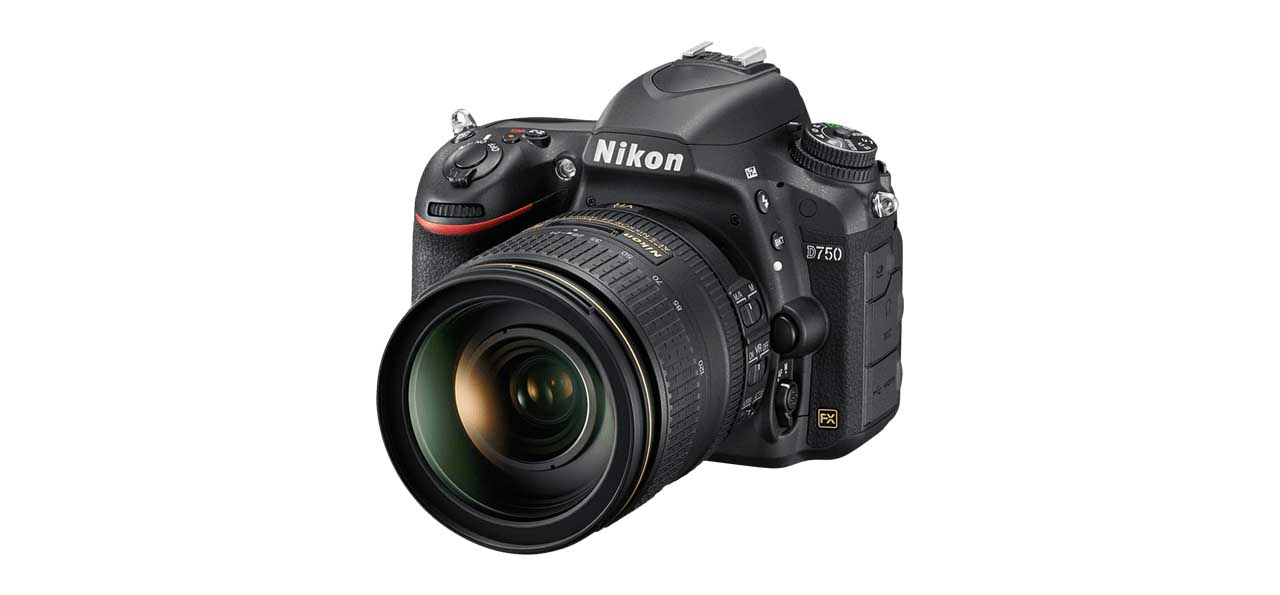
Specification
- Camera type: Full-frame (FX) DSLR
- Sensor: 24.3Mp Full-frame (35.9 x 24mm) CMOS
- Lens mount: Nikon F
- Processing Engine: Expeed 4
- Sensitivity range: ISO 100-12,800 expandable to ISO 50-51,200
- Autofocus system: Viewfinder: 51-point with 15 cross-type, Live View: Contrast detection
- Max shooting rate: 6fps
- Max video resolution: Full HD (1920 x 1080)
- Storage: SD/SDHC/SDXC (UHS-I)
- Viewfinder: Optical with pentaprism 100% coverage
- Screen: 3.2-inch TFT LCD with 1,228,800 dots
- Dimensions: 140.5 x 113 x 78mm
- Weight: 840g with battery and SD card
The Nikon D750 offers a 24.3-megapixel full-frame sensor with an anti-aliasing filter to smooth out finer details to combat moire effects. The camera uses Nikon’s older generation Expeed 4 processor, but the D750 is still a powerful camera and can shoot 6.5fps.
You won’t be able to shoot 4K with the Nikon D750, but it can record Full HD video at up to 60fps. For its time more than half a decade ago, the D750 was a very videographer-friendly camera and on the cutting edge. These days, its movie capabilities have been far surpassed by many other cameras.
However, HD video is still very high quality and perfectly suitable for most situations.
The Nikon Z series cameras boast a hybrid AF system with AF points across the frame. The Nikon D750 has 51 AF points around the frame, meaning you do need to use the focus-and-recompose method if you want your focal point to be in certain parts of the frame. But this is good practice if you’re learning the ropes, and the D750’s AF system is still remarkably fast, even today.
Find the latest deals on the Nikon 750 at Amazon UK and Amazon US.
£1899
$2296Nikon D500
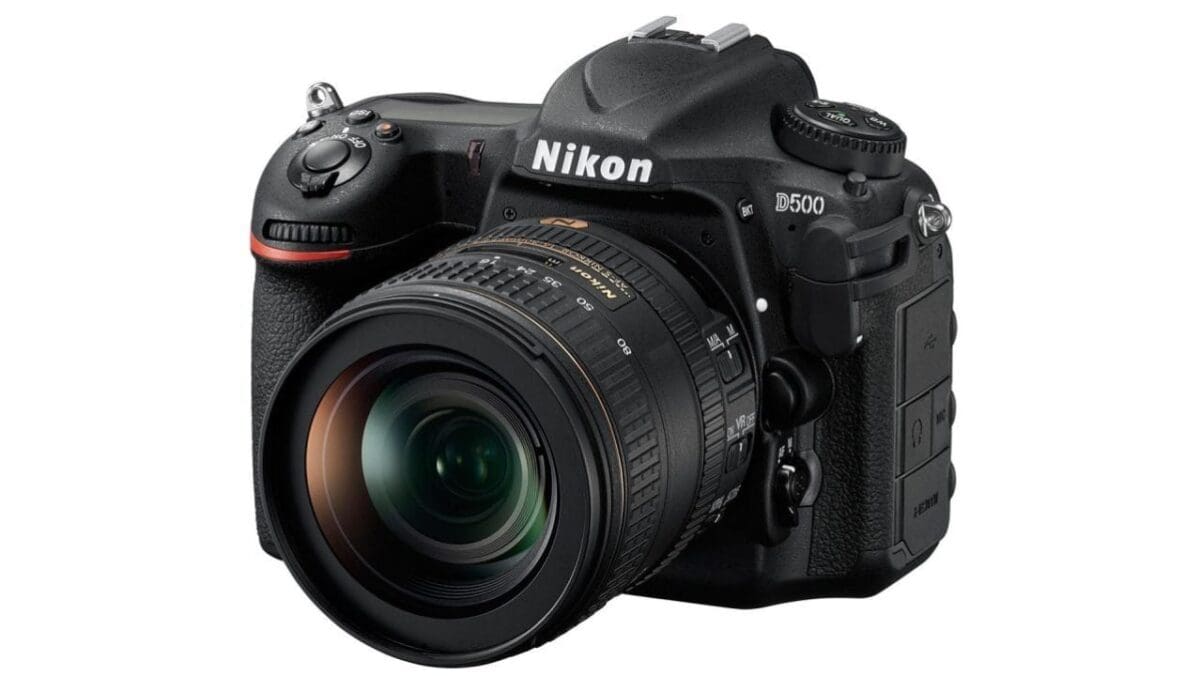
Specification
- Camera type: DSLR
- Announced: 5th January 2016
- Sensor: APS-C (23.5 x 15.7mm) 20.9Mp (5568 x 3712)
- Lens mount: Nikon F
- Processor: Expeed 5
- Sensitivity range: ISO 100-102,400 expandable to ISO 50-1,640,000
- Autofocus system: Viewfinder: 153-point with 99 cross-type Live View: contrast detection
- Max continuous shooting rate: 10fps
- Max video quality: 4K (3840 x 2160) at 30p, 35p, 24p
- Viewfinder: Optical using a pentaprism with 100% view
- Screen: 3.2-inch 2,359,000-dot TFT LCD touchscreen
- Storage: XQD and SD/SDHC/SDXC (UHS-II)
- Battery: EN-EL15b rechargeable Li-ion battery (supplied)
- Dimensions (W x H x D): 147x115x81mm /5.8x4.6x3.2 in
- Weight: 860g with battery and XQD card
Nikon introduced the D500, at the same time as the full-frame D5, as its flagship APS-C (DX) format DSLR. It also has the same sensor architecture and 153-point Multi-Cam 20K autofocus module as the D5, which means it’s extremely capable. The AF system particularly impresses, getting fast-moving subjects sharp (and tracking them) in very low light.
Also, thanks to the Expeed 5 processing engine, the D500 has a maximum continuous shooting rate of 10fps (frames per second), which gives it extra appeal to wildlife and sports photographers.
Another bonus for photographers who like shooting outdoors is that the D500 is weather-sealed to a high standard. There’s also an optional grip available to make it more comfortable to use with long lenses when shooting in portrait orientation.
While the D500 is capable of shooting 4K video, the screen is fixed and the Live View AF system relies on contrast detection, which means it’s not really the ideal choice of camera for shooting video.
However, the D500 produces high-quality stills with a good level of detail maintained all the up to around ISO 6400 and even images shot at ISO 12,800 look very good. This, combined with D500’s rugged build, excellent viewfinder-based AF system and fast-shooting capability, make it a popular choice for wildlife photographers.
Find the latest deals on the Nikon D500 at Amazon UK and Amazon US.
£1730
$1996.95For
- Same sensor design as the Nikon D5
- Same AF system as Nikon D5
- Dual card slots
Canon EOS 5D Mark IV
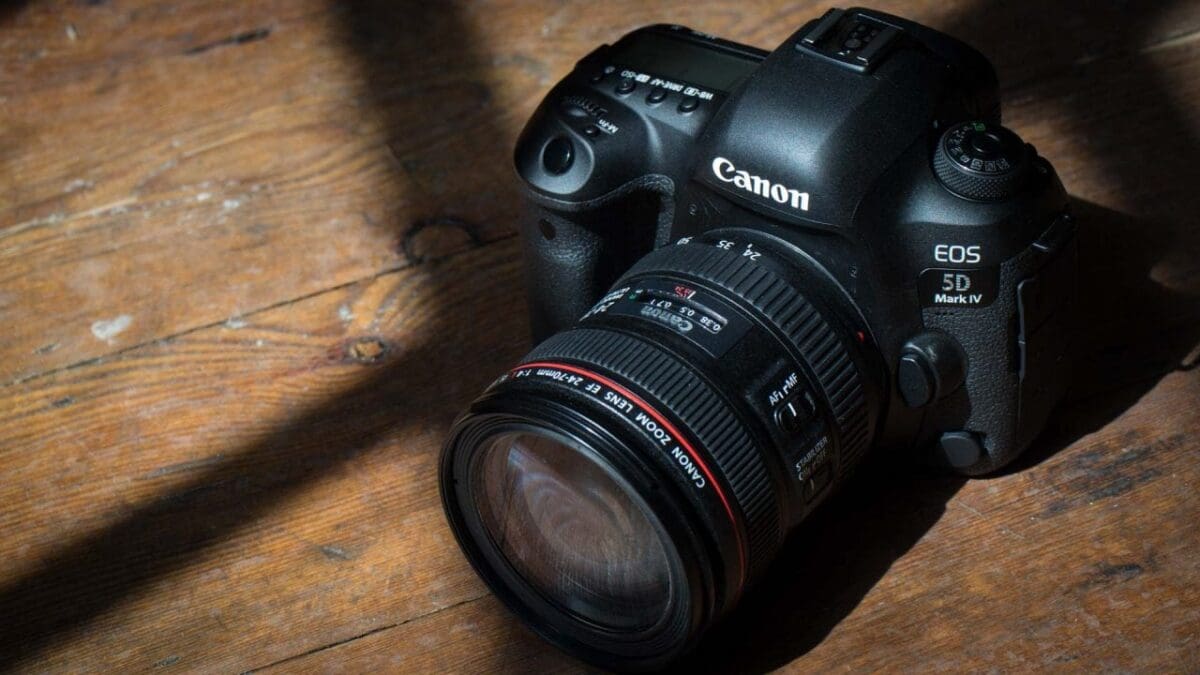
Specification
- Camera type: DSLR
- Announced: 25th August 2016
- Sensor: Full-frame (36 x 24mm) 30.4Mp CMOS
- Processor: Digic 6+
- Lens mount: Canon EF
- Autofocus system: Viewfinder: 61 points with a maximum of 41 cross-type points including 5 dual cross type at f/2.8 and 61 points with 21 cross-type points at f/8, Live View: Dial Pixel CMOS AF
- High-Speed Continuous Shooting Mode: 7fps
- Low-Speed Continuous Shooting Mode: 3fps
- Silent Continuous Shooting: Mirror raised slowly for less noise
- Maximum video resolution: 4K (17:9) 4096 x 2160 at 29.97, 25, 24, 23.98 fps
- Viewfinder: Pentaprism optical with 100% coverage
- Screen: 3.2-inch Clear View LCD II with 1,620,000 dots
- Storage: Dual: 1x CompactFlash and 1x SD/SDHC/SDXC
- Dimensions: 150.7 x 116.4 x 75.9mm
- Weight: 800g
Canon’s EOS 5D range of DSLRs has been popular with advanced enthusiasts and professionals looking for something which can cope well with a range of different subjects. The most recent in the line, the Mark IV, has a collection of useful features that make it well suited to demanding photographers.
While the 5D Mark III offered 22.3 million effective pixels, the Mark IV has 30.4 million, marking a significant jump up in resolution.
However, the inclusion of Digic 6+ processing technology enabled Canon to push the Mark IV’s native sensitivity range up from ISO 100-25,600 to ISO 100-32,000, with expansion settings taking this to ISO 50-102,400 – the same as the 5D Mark III. In video mode sensitivity can be set in the range ISO 100-102,400.
Interestingly, the Canon EOS 5D IV has dual processors, as the Digic 6+ unit is accompanied by a Digic 6 processor. The Digic 6 processor takes care of the exposure metering while the Digic 6+ engine takes care of image capture and processing.
It enables a maximum continuous shooting rate of 7fps (frames per second) with continuous autofocus and metering for up to 21 raw files or an unlimited number of jpegs. In live view mode the camera can shoot at up to 4.3fps.
Canon hasn’t given the 5D Mark IV more autofocus points than the 5D Mark III, but the 61 points are spread further up and down the frame. Also as before, there are 41 cross-type points; however, 21 of them are cross-type down to f/8 (rather than f/4).
There are also 5 dual cross-type points that are sensitive down to f/8 (with the 5D Mark III these are dual cross-type at f/2.8). The system also operates down to -3EV, 1EV darker conditions than the 5D Mark III’s system. This all adds up to make the Canon 5D Mark IV’s autofocus system more sensitive and better able to detect a subject.
Videographers have long enjoyed using the 5D range, and to that end, the Mark IV is capable of recording 4K video and has a range of useful video functions.
Find the latest deals on the Canon EOS 5D Mark IV at Amazon UK and Amazon US.
£1799
$2499For
- 30Mp full-frame sensor
- ISO 100-32000 (expands to 50-102400)
Fujifilm X-T3
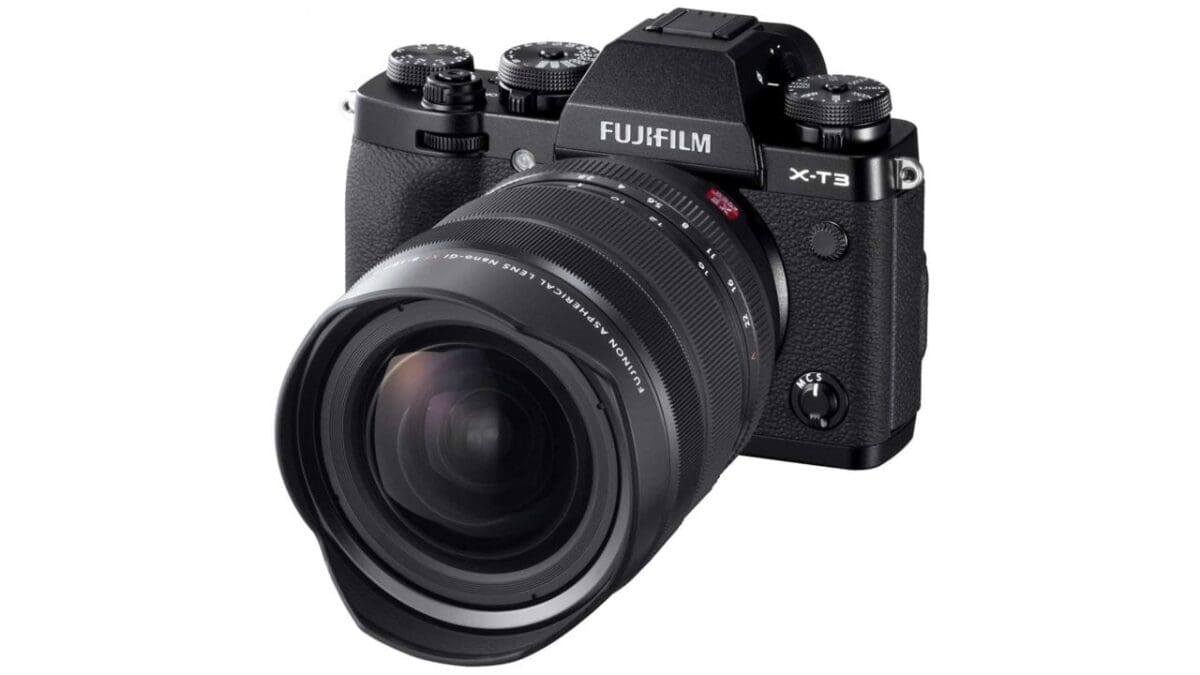
Specification
- Camera type: Mirrorless
- Sensor: 26.1MP X-Trans CMOS 4 APS-C sensor
- Lens mount: X-mount
- Processing engine: X-Processor 4
- Lens mount: Fujifilm X
- Sensitivity range: ISO 80-51,200
- Viewfinder: 3.69-million-dot high resolution EVF (100% coverage)
- Screen: 3.0-inch 1.04 million dot 3-directional tilting touch screen LCD
- Autofocus system: Intelligent hybrid with up to 425 selectable AF points
- Continuous shooting: Mechanical Shutter: 11fps, Electronic Shutter: 20fps continuous shooting at full resolution with AF
- Max video resolution: C4K (4096×2160) at 59.94p/50p/29.97p/25p/24p/23.98p 400Mbps/200Mbps/100Mbps, 4:2:0 10bit internal SD card recording; 1080/120p
- Storage: 2x SD/SDHC/SDXC UHS-II
- Dimensions (WxHxD): 132.5 x 92.8 x 58.8mm (35.4mm at the thinnest point)
- Weight: 489g
The X-T2 was a hugely successful camera for Fujifilm, so when its replacement came along in the form of the X-T3, the company wasn’t going to mess around with what had proved to be a winning formula. The things that everybody loved about the X-T2 were still there, but there were lots of improvements.
While the jump from a 24Mp sensor to a 26Mp chip might not sound too impressive, the X-T3’s sensor is backside-illuminated. That means that photoreceptors (AKA pixels) sit nearer to the surface of the chip, which boosts their light gathering potential. Fujifilm also introduced the fourth generation of its X-processor, which provides a native sensitivity range of ISO 160-12,800.
AF speeds are just 0.06sec acros 425 selectable AF points. What’s more, the AF system can still focus down to -3EV.
Perhaps the biggest leap came with video, though. The headline spec is 4K/60P 4:2:2 10bit recording to an HDMI device. However, there’s also 4K/60P 4:2:0 10bit internal recording to an SD card. It’s even possible to record both simultaneously.
F-Log recording is also possible and can be used when recording video internally or externally. Fujifilm has also reduced the minimum sensitivity for shooting footage in F-Log and with the Dynamic Range (DR) set to 400% to ISO640.
Find the best deals on the Fujifilm X-T3 at Amazon UK and Amazon US.
£1349
$1499For
- Well-implemented traditional controls
- High-quality, attractive images
- Fast, accurate focusing in good light
Sony A7 II
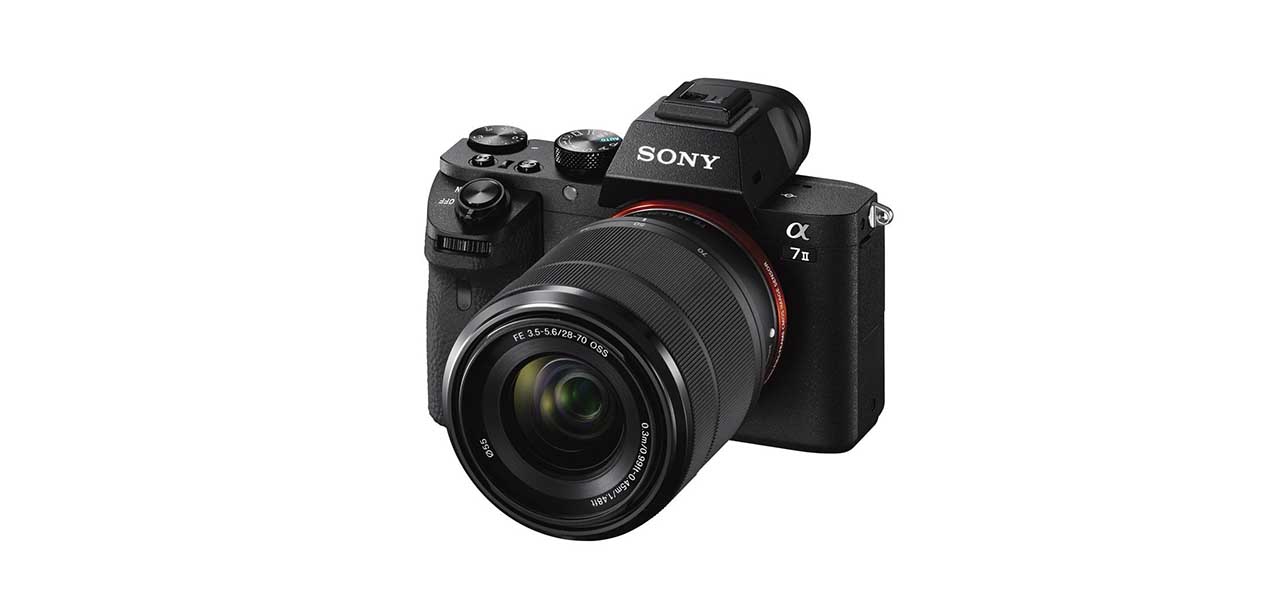
Specification
- Sensor: 24.3-megapixel full-frame
- Stabilisation: 5-axis in-body image stabilisation
- Lens mount: Sony E
- Video: Full HD at up to 120fps
There are a number of Sony A7 series cameras to choose from these days. The A7 ‘all-rounder’ model within that range is a great place to start. For any entry-level or APS-C camera owners out there wanting to go full-frame, the Sony A7 II looks to be an exceptional choice.
While the A7 was no slouch, Sony’s update to its original Alpha 7, the A7 II, pushed the envelope even further. Sony’s A7 II was the first full-frame camera to boast 5-axis image stabilisation, setting a standard that has become a must-have feature for many photographers since.
This image stabilisation is really the key difference between the A7 II and the original Alpha 7, but that IS is very, very good.
Combined with the stabilisation in your lenses (should you have lenses with IS), you will be surprised at how long you can handhold the A7 II while shooting in low light.
Another key difference in the Sony A7 II is the video. No, it doesn’t shoot 4K video like we’ve now come to expect, but Sony did boost the frame rate for Full HD up to 120fps with the A7 II. This opens the door for slow-motion video and a whole host of creative possibilities.
You’ll also probably find that the battery life is a bit longer with the Sony A7 II vs the original A7.
Find the best Sony A7 II deals, or find the latest offers on Amazon UK and Amazon US.
£899
$1298For
- Incredible image stabilisation
- Fast, accurate AF performance
- Plenty of customisation options
Sony A9

Specification
- Sensor: 24.2-megapixel full-frame sensor
- AF system: 693-point wide area phase detection AF
- Burst Mode in C-AF: 20fps
- Raw Files at 20fps: 241
The Sony A9’s 24.2-megapixel full-frame sensor’s integral memory works in tandem with the Bionz X processor to enable faster data readout. As a consequence the Sony A9 has a full resolution maximum continuous shooting rate of 20fps (frames per second), that’s with continuous autofocus and metering.
That blistering pace can be maintained for up to 241 raw files or 362 jpegs – equating to roughly 12 seconds shooting continuously in raw format or 18 seconds in jpeg format.
So you should able to capture every fleeting expression on a top-class 100m sprinter’s face from the gun firing to the finish line and still have some capacity for the winner’s celebration.
In continuous AF mode the A9 is quick to latch onto moving subjects and it follows them with apparent ease. Angela, our reviews editor, normally shies away from settings that give a camera free rein to determine the AF point to use, but the A9 performed superbly in Wide AF mode even when there was a cluttered background such as cliffs or rocks behind the moving birds.
When she was using continuous AF mode to photograph my dog on the beach, She noticed that if he was still the camera sometimes focused on a point a little closer to her than he was, but as soon as he started moving it snapped onto him. If he ran towards her his head got the AF system’s attention; if he ran away it was his backside.
Find the latest deals on the Sony A9 at Amazon UK and Amazon US.
£3399
$2998For
- Fast, clever AF system
- Superb EVF
Panasonic GH5

As well as stills the GH5 is designed to shoot 4K video and it has an extensive range of features to give it appeal to professional videographers. Aspects such as the variable frame rates and 10-bit recording will be of particular interest along with the ability to add V-LogL recording via an optional software key.
The GH5 offers videographers the kind of specification and video quality that is normally only made possible by a much larger, more expensive cinematic camera. It’s even possible to connect XLR mic via an optional adaptor.
In addition to the extensive range of video quality, format and frame rate options, the GH5 has a high-quality viewfinder, excellent vari-angle touch-screen and both 4K Photo and 6K Photo mode to simplify capturing fleeting moments. It’s also dust and weatherproof so you can use it without concern outdoors.
What’s more, Panasonic has shown real commitment to this camera. The company has continually issued new firmware releases that add relevant new technology. In particular, firmware version 2.0 added:
- 4K 4:2:2 10-bit 400Mbps ALL-Intra
- FHD 4:2:2 10-bit 200Mbps ALL-Intra
- 4K HDR video in Hybrid Log Gamma
- 6K anamorphic mode
- 4K anamorphic 4:2:2 10-bit 400Mbps ALL-Intra
- De-squeeze assist viewing mode
- Improved AF and IS in video modes
Find the best deals on the Panasonic GH5 and accessories at Amazon UK and Amazon US.
£1799
$1499For
- Extensive video specification
- High-quality stills and video
- High-quality EVF and vari-angle touch-screen

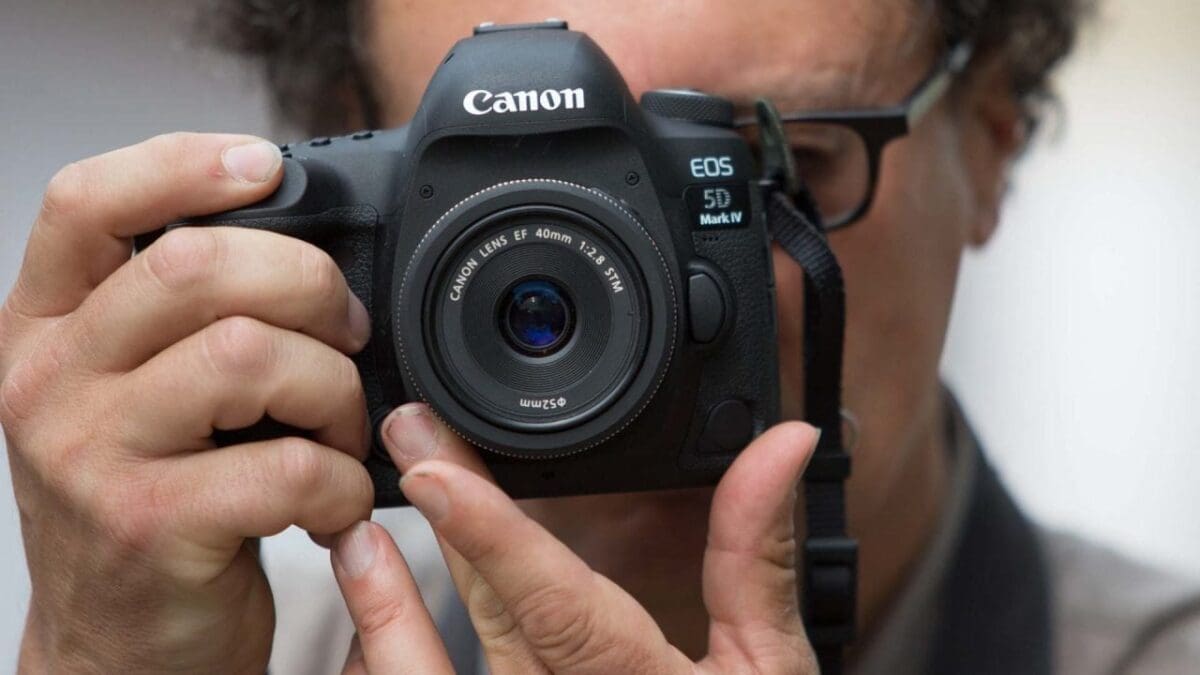


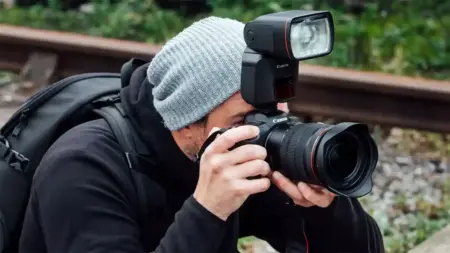
Leave a Reply